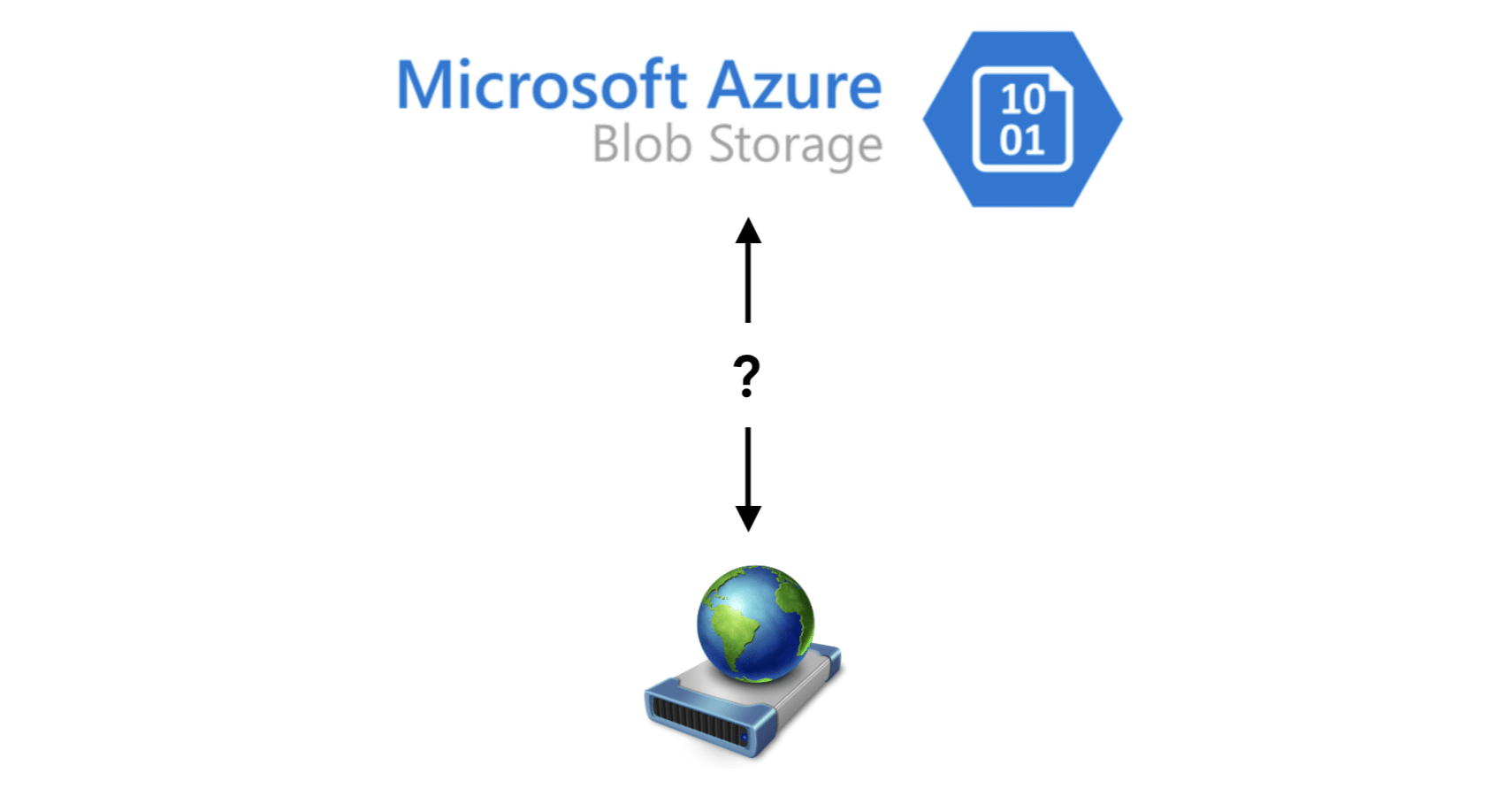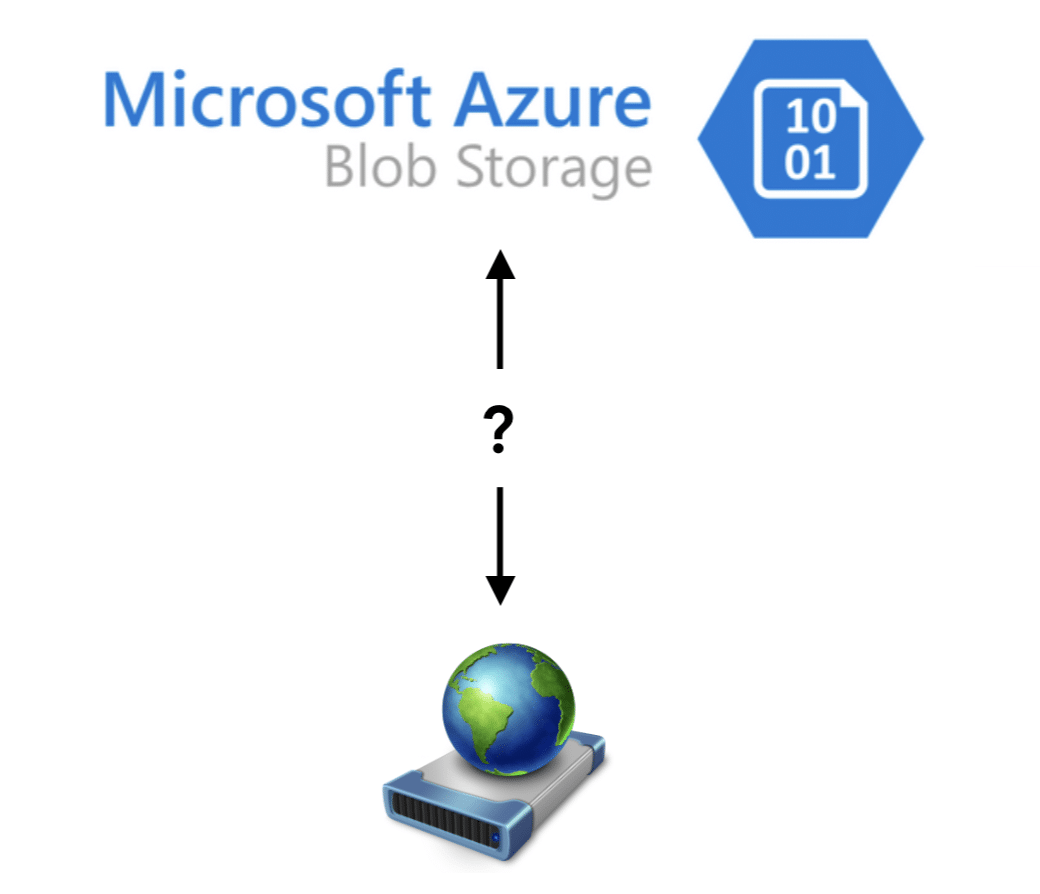Map Network Drive to Azure Blob Storage

Azure Blob Storage is a popular and cost-effective cloud storage solution. The options to access files stored in Azure are, however, inadequate or insufficient. Many users find themselves asking: “Can I map a network drive to Azure Blob Storage?” The short answer is that it’s not as straightforward as you might think, but MyWorkDrive offers a comprehensive and user-friendly solution.
The Challenge
Azure Blob Storage is a powerful cloud storage solution, but it wasn’t designed with traditional network drive mapping in mind. This creates several hurdles for organizations looking to seamlessly integrate Azure Blob Storage into their existing workflows.
Why Can’t You Simply Map a Network Drive to Azure Blob Storage?
- Protocol Mismatch: Azure Blob Storage uses REST APIs, not the SMB or NFS protocols typically used for network drives.
- Authentication Complexities: Azure Blob Storage uses different authentication methods than traditional file shares.
- Performance Issues: Direct mapping can lead to latency and performance problems, especially with large files or numerous small files.
- Security Concerns: Naive implementations might expose sensitive storage access keys.
Existing Approaches to Map Network Drive to Azure Blob Storage

While there are some workarounds and tools available, they often fall short in terms of user experience, security, or functionality.
Azure Storage Explorer: Not Ideal for End-Users
Azure Storage Explorer is a tool provided by Microsoft that allows you to manage Azure Blob Storage. However, it’s not designed for mapping a network drive to Azure Blob Storage in a user-friendly way. Here’s why:
- Complexity: It’s geared towards developers and IT professionals, not end-users.
- No True Network Drive Mapping: It doesn’t provide a native Windows Explorer experience.
- Learning Curve: Requires training and familiarity with Azure concepts.
Third-Party Map Drive Clients: Security Risks and Limitations
Some third-party solutions claim to map a network drive to Azure Blob Storage, but they come with significant drawbacks:
- Security Vulnerabilities: Many require global storage keys, exposing your entire storage account.
- Limited Integration: They often lack seamless integration with Azure Active Directory (now Entra ID).
- Rudimentary Functionality: These solutions may not support advanced features like hierarchical namespaces.
The Solution: Mapping a Network Drive to Azure Blob Storage With MyWorkDrive
MyWorkDrive is a comprehensive solution that addresses all the challenges of mapping a network drive to Azure Blob Storage while maintaining security and user experience.
Key Features of MyWorkDrive for Azure Blob Storage Integration
- Native Entra ID Integration: Seamless authentication without exposing storage keys.
- True Network Drive Mapping: Provides a familiar Windows Explorer experience.
- Hierarchical Namespace Support: Leverages Azure Data Lake Storage Gen2 capabilities.
- Granular Permissions: File and folder level access control.
- Multi-Client Support: Access your Azure Blob Storage via mapped drive, mobile app, or web client.
- Enhanced Security: Includes data leak prevention and controlled public file sharing. - Safer Connection: Connects over HTTPS with two factor authentication.
How MyWorkDrive Solves the “Map Network Drive to Azure Blob Storage” Challenge
MyWorkDrive acts as a secure bridge between your users and Azure Blob Storage, providing:
- Seamless User Experience: Users interact with Azure Blob Storage as if it were a local network drive.
- Enhanced Security: No need to distribute storage keys; all authentication is handled securely.
- Performance Optimization: Intelligent caching and data transfer mechanisms ensure smooth operation.
- Compliance Features: Built-in tools to help meet data protection regulations.
How to Use MyWorkDrive to Map Network Drive to Azure Blob Storage
Getting started with MyWorkDrive is straightforward:
- Set Up Azure Blob Storage: Ensure your Azure Blob Storage account is configured with hierarchical namespace enabled.
- Install MyWorkDrive Server: Deploy the MyWorkDrive server in your environment.
- Configure Azure Integration: Connect MyWorkDrive to your Azure Blob Storage using secure methods.
- Set Up User Access: Configure user permissions and access controls.
- Deploy Clients: Distribute the MyWorkDrive client to your users for mapped drive, mobile, or web access.
Benefits of Using MyWorkDrive to Map Network Drive to Azure Blob Storage
By choosing MyWorkDrive, organizations can:
- Improve Productivity: Users work with cloud storage as easily as local drives.
- Enhance Security: Granular controls and secure authentication protect your data.
- Reduce IT Overhead: Simplified management and user self-service capabilities.
- Ensure Compliance: Built-in features to help meet regulatory requirements.
- Leverage Cloud Benefits: Enjoy the scalability and reliability of Azure Blob Storage without sacrificing usability.
Conclusion
While the challenge of mapping a network drive to Azure Blob Storage are complex, MyWorkDrive provides a comprehensive solution that maintains user experience, enhances security, and unlocks the full potential of cloud storage. By bridging the gap between traditional network drives and modern cloud storage, MyWorkDrive empowers organizations to leverage Azure Blob Storage without compromising on usability or security.
Don’t settle for partial solutions or security risks when it comes to accessing your Azure Blob Storage. Choose MyWorkDrive to experience the perfect blend of cloud power and traditional file access.
FAQ
Can I directly map a network drive to Azure Blob Storage?
No, you cannot directly map a network drive to Azure Blob Storage using native Windows functionality. Azure Blob Storage uses REST APIs, which are incompatible with the protocols typically used for network drive mapping (like SMB or NFS). However, solutions like MyWorkDrive enable you to map a network drive to Azure Blob Storage seamlessly.
Can I use Azure Storage Explorer to map a network drive to Azure Blob Storage?
While Azure Storage Explorer allows you to manage Azure Blob Storage, it doesn"t provide true network drive mapping functionality. It"s more suited for IT professionals and developers rather than end-users looking for a seamless file explorer experience.
Is MyWorkDrive the only way to map a network drive to Azure Blob Storage?
While there are other methods and tools available, MyWorkDrive is unique in offering a complete solution that addresses user experience, security, and functionality challenges. It"s currently the most comprehensive option for organizations looking to provide network drive access to Azure Blob Storage.
What are the challenges of mapping a network drive to Azure Blob Storage?
The main challenges include protocol incompatibility, authentication complexities, potential performance issues, security concerns especially when handling access keys, and maintaining a user-friendly experience
How does MyWorkDrive solve the challenge of mapping a network drive to Azure Blob Storage?
MyWorkDrive provides a comprehensive solution that offers true network drive mapping with a familiar Windows Explorer experience, integrates natively with Entra ID for secure authentication, supports hierarchical namespaces, provides granular file and folder-level permissions, andIncludes additional security features like data leak prevention.